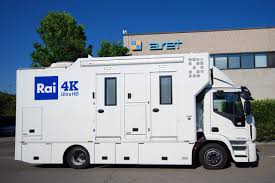What is a Rai Van?
A Rai Van, commonly known as a railway van, is a specialized vehicle designed to operate on rail tracks. These vehicles are integral to both passenger and cargo transport, offering a versatile solution for various logistical needs. Rai Vans come in different configurations, each equipped with features tailored to their specific functions, ranging from the transportation of goods to providing passenger services.
Importance of Rai Vans in Modern Transportation
In today’s fast-paced world, Rai Vans are a vital component of the transportation infrastructure. They provide an efficient and reliable means of moving large volumes of goods and passengers over long distances. This efficiency is crucial for economic activities, as it supports the timely delivery of products and raw materials, as well as the convenient and safe transport of people. With advancements in technology, Rai Vans have continued to evolve, enhancing safety, comfort, and operational efficiency.
Design and Features of Rai Vans
Structural Design
The structural design of Rai Vans is meticulously engineered to withstand the demands of rail transport. Typically constructed from high-strength materials such as steel and aluminum, these vehicles are built to handle heavy loads while maintaining stability and durability. The design often includes features to minimize vibrations and noise, ensuring a smooth and comfortable ride. The robust construction also helps to protect the cargo or passengers during transport.
Key Features and Innovations
Modern Rai Vans are equipped with a variety of features that enhance their functionality and comfort:
- Advanced Suspension Systems: These systems help to absorb shocks and vibrations, providing a smoother ride and reducing wear and tear on the vehicle and cargo.
- Climate Control: To maintain comfortable temperatures for passengers or to preserve sensitive cargo.
- Ergonomic Seating: Designed to offer maximum comfort for passengers, especially on long journeys.
- Sophisticated Braking Systems: These systems include technologies such as regenerative braking, which recovers energy during braking to improve efficiency.
- Energy-Efficient Lighting: Modern lighting solutions reduce energy consumption and enhance visibility inside the van.
- Real-Time Tracking Systems: These systems provide real-time information on the location and status of the van, improving logistics and security.
Safety Features
Safety is a paramount concern in the design of Rai Vans. Key safety features include:
- Reinforced Structures: To protect against impacts and collisions.
- Collision Detection Systems: Advanced sensors and systems to detect potential collisions and take preventative action.
- Automated Braking: Systems that can automatically engage the brakes to prevent accidents.
- Fire Suppression Systems: Designed to quickly extinguish fires to protect passengers and cargo.
- Compliance with Safety Standards: Modern Rai Vans are built to meet stringent safety regulations, ensuring the safety of both passengers and cargo.
Types of Rai Vans
Rai Vans, also known as railway vans, come in various types designed to meet specific transportation needs. These versatile vehicles are integral to both passenger and cargo transport, offering tailored solutions for a wide range of applications. Here, we explore the primary types of Rai Vans:
1. Passenger Rai Vans
Passenger Rai Vans are designed to provide comfortable and efficient transportation for people. These vehicles are equipped with various features to enhance the travel experience:
- Seating Arrangements: Depending on the intended service, seating can range from basic benches to luxurious, reclining seats with ample legroom.
- Amenities: To improve passenger comfort, these vans often include restrooms, Wi-Fi, entertainment systems, and sometimes even dining facilities. High-speed passenger Rai Vans offer rapid transit options, making them ideal for long-distance travel.
These vans are essential for public transport systems, providing a reliable and comfortable mode of travel for commuters and long-distance travelers alike.
2. Cargo Rai Vans
Cargo Rai Vans are specialized vehicles designed for the transportation of goods. They come in various configurations to handle different types of cargo:
- Box Vans: Enclosed vans ideal for transporting general merchandise, protecting the cargo from the elements.
- Flatbeds: Used for large, heavy, or oversized items, such as machinery and construction materials, that do not require enclosure.
- Refrigerated Vans: Equipped with cooling systems to transport perishable goods like food and pharmaceuticals.
These cargo vans are crucial to the logistics industry, facilitating the movement of goods across regions and countries efficiently and safely.
3. Specialized Rai Vans
Specialized Rai Vans are customized to meet unique requirements and applications. These include:
- Medical Rai Vans: Equipped with healthcare facilities, these vans can provide medical services in remote or underserved areas, functioning as mobile clinics.
- Luxury Rai Vans: Designed for high-end travel experiences, these vans offer luxurious accommodations, including private cabins, fine dining, and entertainment systems.
- Maintenance Rai Vans: These are used for railway infrastructure upkeep, equipped with tools and equipment necessary for track inspection, repair, and maintenance.
These specialized vans are tailored to specific functions, providing essential services beyond standard passenger and cargo transport.
Manufacturing of Rai Vans
The manufacturing of Rai Vans is a complex process that involves several key stages and technologies. This process is dominated by several major manufacturers known for their quality and innovation.
Major Manufacturers
Leading players in the Rai Van manufacturing industry include:
- Bombardier: Known for producing a wide range of high-quality railway vehicles, including passenger and cargo vans.
- Siemens: A major manufacturer that integrates advanced technologies into their rail vehicles, focusing on efficiency and sustainability.
- Alstom: Renowned for its innovation in high-speed rail and specialized Rai Vans.
- CRRC Corporation: One of the largest producers of rail vehicles globally, offering a broad spectrum of Rai Vans.
These companies leverage their extensive experience and advanced technologies to produce high-quality Rai Vans that meet international standards.
Production Process
The production of Rai Vans involves several stages:
- Design and Prototyping: Using computer-aided design (CAD) software, manufacturers create detailed models of the Rai Vans. Prototypes are built to test and refine designs.
- Assembly: The vans are assembled using advanced materials and components. Automation and robotic systems are increasingly used to improve precision and efficiency.
- Testing: Each Rai Van undergoes rigorous testing to ensure it meets safety and performance standards. This includes structural tests, system checks, and operational trials.
Advances in Rai Van Manufacturing
Recent advancements in manufacturing technologies have significantly enhanced the quality and performance of Rai Vans:
- 3D Printing: Used for rapid prototyping and the production of complex components, reducing time and costs.
- Advanced Materials: The use of lightweight and durable materials, such as composites, has improved the efficiency and longevity of Rai Vans.
- Robotic Assembly: Enhances precision and speed in the assembly process, leading to higher quality products.
These innovations are transforming the industry, leading to the development of more efficient, durable, and energy-efficient Rai Vans.
How Rai Van Works
Rai Vans, also known as railway vans or autonomous rail vehicles, represent a significant advancement in transportation technology. They utilize advanced autonomous driving technology, allowing them to navigate and operate with minimal human intervention. Here’s an in-depth look at how Rai Vans work, including the technologies and infrastructure that support their operation.
Advanced Autonomous Driving Technology
The core of Rai Van’s functionality lies in its advanced autonomous driving systems. These systems are equipped with a suite of cutting-edge technologies that enable the vehicle to operate safely and efficiently:
- Sensors and Cameras: Rai Vans are outfitted with a variety of sensors, including LiDAR, radar, and cameras, which provide a comprehensive view of the surrounding environment. These sensors detect obstacles, track the position of the van, and monitor the conditions of the tracks and surroundings.
- Artificial Intelligence Algorithms: The data collected by the sensors and cameras is processed using sophisticated AI algorithms. These algorithms analyze the information in real-time to make decisions about navigation, speed adjustments, and safety measures. They can recognize and respond to various scenarios, such as obstacles on the tracks or changes in weather conditions.
- Communication Systems: Rai Vans are equipped with communication systems that allow them to interact with each other and with central control stations. This connectivity enables coordinated movements, particularly in complex urban areas, and ensures that the vans operate efficiently within the broader transportation network.
Infrastructure Requirements
For Rai Vans to function optimally, a supportive infrastructure is essential. This infrastructure includes:
- Dedicated Lanes: In some urban areas, dedicated lanes or tracks are established exclusively for Rai Vans. These lanes help manage traffic flow, reduce the risk of accidents, and improve the overall efficiency of the transportation system. Dedicated lanes can also be equipped with sensors and communication devices to assist in the operation of the vans.
- Renewable Energy Charging Stations: Many Rai Vans are designed to be eco-friendly, using electric propulsion systems powered by renewable energy sources. Charging stations, often located at strategic points along the route, provide the necessary infrastructure to keep these vehicles running. These stations can be equipped with fast-charging technology to minimize downtime.
- Intelligent Traffic Control Systems: Intelligent traffic control systems play a crucial role in managing the flow of Rai Vans and other vehicles. These systems use real-time data to optimize traffic signals, manage lane usage, and coordinate the movements of autonomous vehicles. By communicating with the Rai Vans, these systems can ensure smooth and safe transit, reducing congestion and improving overall traffic efficiency.
The Evolution of Rai Vans
Rai Vans, known for their versatility in transporting both passengers and cargo, have a rich history that dates back to the early days of rail transport. Originating in the 19th century, these vehicles have undergone significant evolution in design, functionality, and technology. This article explores the journey of Rai Vans from their inception to their modern iterations, highlighting key developments along the way.
Early Beginnings: 19th Century
The concept of Rai Vans emerged alongside the development of the first railway systems in the early 19th century. Initially, these vehicles were primarily designed for freight transport. The early Rai Vans were simple, open carriages or enclosed boxcars, often made of wood, which were used to transport goods, raw materials, and agricultural products. They played a crucial role in the Industrial Revolution, facilitating the rapid movement of goods across regions and supporting burgeoning industries.
The Industrial Revolution and Expansion
As the Industrial Revolution progressed, the demand for efficient transportation systems grew exponentially. This period saw significant advancements in railway technology, including the introduction of stronger materials like iron and steel, which allowed for the construction of more durable and robust Rai Vans. These improvements enabled the transport of heavier loads and more diverse types of cargo, from coal and minerals to manufactured goods.
During this era, the concept of passenger Rai Vans also began to take shape. The expansion of rail networks made it feasible to offer passenger services, leading to the development of specialized passenger carriages. These early passenger Rai Vans were often basic, with simple wooden benches and minimal amenities. However, they provided a more comfortable and faster alternative to other forms of transport available at the time, such as horse-drawn carriages.
20th Century Innovations
The 20th century brought about a new wave of innovations in Rai Van design and functionality. The introduction of electric and diesel locomotives revolutionized rail transport, offering greater speed, efficiency, and reliability. This period also saw the standardization of Rai Van sizes and coupling systems, which facilitated international rail transport and interoperability between different railway networks.
Passenger Rai Vans experienced significant upgrades, with the introduction of more comfortable seating, heating systems, and amenities such as dining and sleeping cars. The development of high-speed rail in the latter half of the 20th century further transformed passenger Rai Vans, allowing for rapid long-distance travel. These high-speed trains featured advanced aerodynamics, noise reduction technologies, and luxurious interiors, catering to both business and leisure travelers.
Modern Rai Vans: Technological Advancements
In the 21st century, Rai Vans have continued to evolve, incorporating cutting-edge technologies and sustainable practices. Modern passenger Rai Vans are equipped with features such as Wi-Fi, climate control, ergonomic seating, and entertainment systems, enhancing the travel experience. High-speed passenger Rai Vans can reach speeds of over 300 km/h (186 mph), making them competitive with air travel for certain routes.
Cargo Rai Vans have also seen improvements, with the introduction of specialized types such as refrigerated vans for perishable goods, tankers for liquids, and flatbeds for oversized cargo. Innovations like automated loading and unloading systems, real-time tracking, and smart logistics have streamlined freight operations, making them more efficient and reliable.
Sustainability has become a key focus, with many Rai Vans now powered by electric or hybrid systems. The use of lightweight materials and energy-efficient designs has reduced the environmental impact of rail transport, aligning with global efforts to reduce carbon emissions.
Rai Van Maintenance and Care
Rai Vans, whether used for passenger transport or freight, require diligent maintenance and care to ensure optimal performance and longevity. Regular upkeep is essential for addressing wear and preventing potential issues, thereby enhancing the safety and reliability of these vehicles. Here’s a detailed look at Rai Van maintenance, common problems, and their presence across various regions.
Routine Care and Inspections
Ongoing maintenance is crucial for Rai Vans to operate efficiently and extend their lifespan. The routine care and inspection process includes:
- Regular Inspections: Scheduled inspections are performed to check for any signs of wear or damage. These inspections cover various components, including the wheels, brakes, suspension systems, and structural integrity.
- Servicing: Routine servicing involves tasks such as lubricating moving parts, replacing worn-out components, and checking fluid levels. Regular servicing helps prevent minor issues from escalating into major problems.
- Repairs: When defects or malfunctions are identified during inspections, prompt repairs are necessary to maintain operational safety and efficiency. Repairs might include fixing mechanical issues, addressing electrical faults, or reinforcing structural components.
Adhering to a structured maintenance schedule ensures that Rai Vans remain in excellent condition, minimizing the risk of breakdowns and extending their operational life.
Addressing Common Problems
Rai Vans may encounter several issues that require timely intervention:
- Mechanical Malfunctions: Problems with the engine, transmission, or braking systems can affect performance and safety. Regular maintenance and the use of advanced diagnostic tools help in identifying and rectifying these issues.
- Electrical Faults: Electrical systems, including lighting, signaling, and communication systems, may experience faults. These issues are addressed by skilled technicians using specialized diagnostic equipment.
- Structural Wear: Over time, structural components can experience wear and tear. Regular inspections help detect early signs of damage, allowing for repairs or reinforcements to maintain the van’s integrity.
Advanced diagnostic equipment and the expertise of skilled technicians are essential for effectively identifying and resolving these problems, ensuring the reliability and safety of Rai Vans.
Enhancing Longevity and Strength
The durability and lifespan of Rai Vans are influenced by several factors:
- Design and Material Quality: Rai Vans constructed from high-grade materials such as steel and aluminum exhibit greater strength and durability. The design also plays a crucial role in how well the van can withstand the stresses of rail transport.
- Regular Maintenance: Consistent upkeep and timely repairs help prevent extensive damage and maintain the van’s performance over time. Regular maintenance is key to preventing premature wear and extending the vehicle’s lifespan.
- Technological Advancements: Recent developments in materials and technologies, such as advanced composites and automated systems, contribute to the creation of more robust and enduring Rai Vans. These innovations enhance the vehicle’s overall strength and longevity.
Rai Vans Across Various Regions
Rai Vans are utilized globally, with variations in design and function depending on regional needs and advancements.
Rai Vans in North America
In North America, Rai Vans are crucial for both passenger and freight rail systems. Major urban centers rely on commuter Rai Vans for daily travel, while freight Rai Vans are essential for transporting goods across long distances. The region is increasingly exploring the use of electric and autonomous Rai Vans, reflecting a shift towards more sustainable and innovative transportation solutions.
Rai Vans in Europe
Europe boasts a comprehensive and advanced railway system where Rai Vans are integral. High-speed passenger Rai Vans connect key cities, while cargo Rai Vans facilitate cross-border trade. Europe leads in technological advancements, including the integration of electric and Internet of Things (IoT)-connected Rai Vans, enhancing efficiency and connectivity.
Rai Vans in Asia
Asia’s rapidly growing economies are driving significant investments in rail infrastructure. Countries like China, Japan, and India are expanding their rail networks, with Rai Vans playing a critical role in their transportation frameworks. The region is also pioneering developments in high-speed and autonomous Rai Vans, showcasing innovation in rail technology.
Rai Vans in Emerging Markets
In emerging markets, Rai Vans are vital for improving transportation networks and fostering economic growth. Investments in modern railway infrastructure and the adoption of advanced Rai Vans are enhancing transportation efficiency and accessibility. These developments are crucial for addressing challenges such as traffic congestion and environmental sustainability.
Conclusion
Rai Vans, with their diverse applications and evolving technology, are essential to modern transportation systems worldwide. Routine maintenance, timely repairs, and adherence to best practices are critical for ensuring their longevity and performance. As Rai Vans continue to adapt to regional needs and technological advancements, they will remain a cornerstone of efficient and reliable rail transport across the globe.




